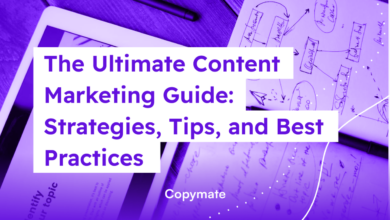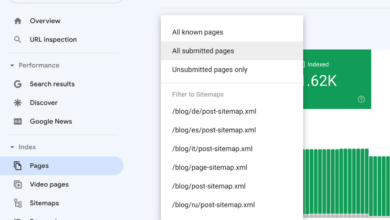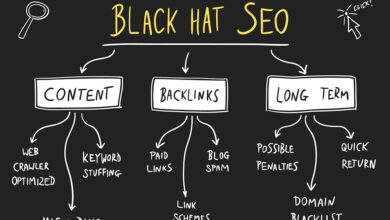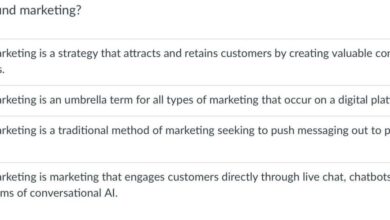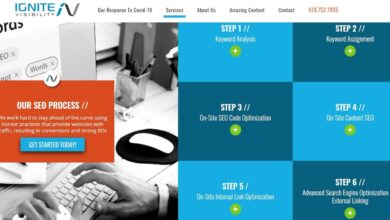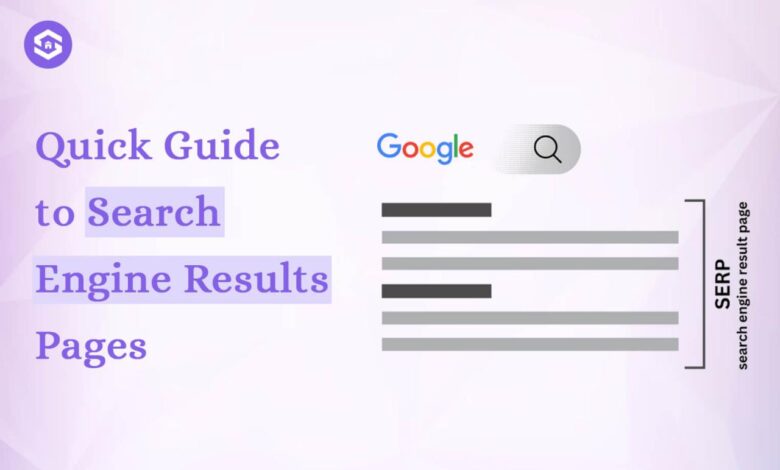
SERP Features A Deep Dive
SERP features are rapidly changing the landscape of organic search results. This deep dive explores the evolution, impact, and optimization strategies surrounding these features, from understanding their various types and placement to crafting content that excels in the ever-changing SERP.
We’ll examine how SERP features influence click-through rates, user experience, and the competitive landscape. Furthermore, we’ll analyze how these features vary across different niches and search intents, providing a nuanced perspective on optimizing your content for maximum visibility.
Introduction to SERP Features
Search Engine Result Pages (SERPs) are constantly evolving, moving beyond simple lists of links to become dynamic information hubs. SERP features are the enhancements that provide users with more immediate and comprehensive answers to their queries, directly within the search results. This shift reflects a growing demand for instant gratification and concise information, influencing how users interact with search engines and how businesses optimize their online presence.These features are designed to provide users with a more intuitive and enriching search experience, often answering their questions before they even have to click on a link.
Their increasing prevalence has fundamentally altered how professionals approach search engine optimization, demanding a new level of strategy and understanding.
Definition of SERP Features
SERP features are supplementary elements displayed alongside or within the standard search results list. They are designed to deliver immediate answers, context, and related information directly on the SERP, enhancing the user experience and often circumventing the need for clicking through to other pages. This direct delivery of information streamlines the search process and significantly impacts user engagement.
Evolution of SERP Features
Early SERPs primarily consisted of a list of links, with minimal additional information. Over time, search engines have increasingly incorporated SERP features, evolving from basic snippets to more complex displays. This evolution is driven by the desire to provide more comprehensive and relevant information to users, recognizing the shift towards instant gratification and direct answers. This evolution has also been influenced by the growing volume and diversity of online content, necessitating a more refined approach to filtering and presenting relevant results.
Types of SERP Features
Various types of SERP features cater to different user needs and query types. Some prominent examples include:
- Featured Snippets: Concise answers directly displayed at the top of the SERP, often formatted as a paragraph, list, or table. These provide instant answers to common questions and are highly effective in driving user engagement. They are a significant factor in determining user engagement and click-through rates.
- Knowledge Panels: Comprehensive summaries of entities (people, places, organizations, and things) that appear directly on the SERP. They provide quick access to key information, significantly enhancing the user experience, especially for informational searches.
- Image Packs: Collections of relevant images displayed alongside or within the SERP results. These are particularly useful for visual searches and provide a visual representation of information, improving user experience and enhancing engagement.
- Videos: Video results integrated into SERPs offer a dynamic and interactive way to access information. They often appear prominently on the SERP, demonstrating the growing integration of multimedia content in search.
- Local Packs: Local search results displayed prominently on the SERP, including businesses, maps, and other location-specific information. This enhances the search experience for geographically-oriented queries.
Prevalence and Impact of SERP Features Across Different Search Engines
| Search Engine | Prevalence of SERP Features | Impact on User Engagement |
|---|---|---|
| High; A wide variety of features are consistently implemented and refined. | Very significant; Google’s dominance in the search market means its SERP features have a substantial impact on overall user engagement and behaviour. | |
| Bing | Moderate; While Bing offers a range of SERP features, their implementation and prevalence vary from Google’s. | Moderate; Bing’s SERP features have a notable impact, but the level of user engagement might be slightly lower compared to Google. |
| DuckDuckGo | Moderate; Emphasizes user privacy and often implements a more streamlined approach to SERP features, focusing on core results. | Moderate; DuckDuckGo’s SERP features focus on delivering relevant results and user privacy. |
Placement of SERP Features on Search Results Pages
The placement of SERP features on SERPs varies depending on the feature type and the specific search query. However, general trends exist:
- Featured snippets and knowledge panels are frequently displayed at the top of the page, often above the organic search results, highlighting their importance and intent to provide immediate answers.
- Image packs and local packs may be interspersed throughout the results, depending on the search query. Their placement often correlates with the relevance of the image or local context to the query.
- Videos may be integrated within the results, but their placement may vary depending on the specific search query.
Impact of SERP Features on Organic Search Results

SERP features, those visually distinct elements that appear alongside organic search results, are reshaping how users interact with search engine results pages. These features, from featured snippets to knowledge panels, significantly impact organic search visibility, click-through rates, and ultimately, a brand’s online presence. Understanding their influence is crucial for any strategy.SERP features aren’t just decorative elements; they’re a dynamic force in the digital landscape.
They influence how users perceive and prioritize search results, often directing traffic towards specific listings. The varying types of SERP features cater to different user needs and information-seeking behaviors, impacting user experience and competitive positioning.
Understanding search engine results page (SERP) features is crucial for any online strategy, especially when targeting a global audience. Optimizing for these features can significantly boost visibility. For example, if you’re managing international Facebook pages, understanding how different countries and regions search can be game-changing. International Facebook global pages often have unique search behaviors, and incorporating that knowledge into your SERP optimization will pay dividends.
Ultimately, a strong SERP presence is key for international brand visibility.
Influence on Organic Search Result Visibility
SERP features often dominate the top of the page, potentially overshadowing organic results. This means higher rankings in organic search results don’t always guarantee visibility. A strong presence in a relevant SERP feature, like a featured snippet, can significantly increase visibility, even if the corresponding organic listing is ranked lower. For example, a website with a featured snippet for a frequently searched query will likely see higher visibility despite not being at the top of the organic listings.
Effect on Click-Through Rates
SERP features significantly influence click-through rates (CTR). Visually prominent features, like rich snippets and featured snippets, draw more user attention, leading to a higher likelihood of clicks. The visually appealing nature of these features often encourages users to select the featured result or related results rather than scrolling down through the organic results. Data from various sources consistently show a correlation between the presence of SERP features and higher CTRs for those results.
Impact on User Experience
SERP features aim to provide users with quick answers and relevant information directly on the search results page. This often improves user experience by reducing the need to navigate to external websites. Users can find the specific information they need without leaving the search engine. Providing instant answers through features like featured snippets and knowledge panels reduces the perceived need to visit the linked website, leading to a more satisfactory user experience.
Comparison of Different SERP Features and Their Effects on User Behavior
Different SERP features have different impacts on user behavior. For example, featured snippets, which directly answer user queries, often result in high click-through rates for the highlighted result, but may not necessarily drive traffic to the entire site. Conversely, a knowledge panel, showcasing a summary of information about a topic, can increase awareness and drive more traffic to the site.| Feature Type | Typical Effect on User Behavior ||—|—|| Featured Snippet | High CTR for the highlighted result, potential for reduced traffic to the entire site.
|| Knowledge Panel | Increased awareness and traffic to the website. || Local Pack | Increased visibility for local businesses, potentially driving in-store visits. || Image Pack | High engagement with image results, potentially driving traffic to the image source. |
Influence on the Competitive Landscape
SERP features have reshaped the competitive landscape. The ability to secure a prominent position in these features is now a key aspect of strategy. Businesses need to optimize their content and websites not just for organic ranking but also for the specific format and requirements of various SERP features. This shift requires a more holistic approach to , emphasizing content quality, structured data, and the understanding of user intent.
Companies that effectively utilize these features gain a competitive edge by appearing more prominently in search results.
Optimizing for SERP Features
Unlocking the potential of search engine result pages (SERPs) requires a deep understanding of how search engines prioritize content. SERP features, like featured snippets and knowledge panels, are now integral to successful organic search strategies. This section dives into the strategies needed to optimize your content for these coveted spots, boosting visibility and driving organic traffic.Understanding the interplay between search queries and SERP features is crucial for effective optimization.
A well-optimized page can rank higher in the search results, potentially appearing in prominent SERP features.
Identifying Relevant SERP Features
Effective optimization begins with identifying the SERP features most relevant to your content. Analyze typical search queries related to your topic. Tools like Google Search Console and SEMrush can help you pinpoint search queries associated with specific SERP features. Pay attention to the type of information users are seeking, as this will dictate the ideal SERP feature to target.
For instance, if users frequently ask “What are the benefits of X?”, a featured snippet might be a prime target.
Crafting Content Optimized for Specific SERP Features
Crafting content optimized for specific SERP features requires a strategic approach. For featured snippets, focus on concise, comprehensive answers to frequently asked questions. Structure your content with clear headings and subheadings, using short, declarative sentences and bullet points. The goal is to deliver the information in a format easily digestible by search engines. For knowledge panels, ensure accuracy and completeness in your content.
Provide detailed information, encompassing different facets of your topic.
Structuring Content for Different SERP Features
The structure of your content directly impacts its visibility in SERP features. For featured snippets, use clear and concise language, structuring the answer in a format easily digestible by search engines. Use headings, subheadings, and bullet points. For knowledge panels, maintain factual accuracy and comprehensively cover all relevant aspects of your topic. Ensure the information is complete and organized.
Incorporating Multimedia Elements
Multimedia elements, like images and videos, can significantly enhance your content’s appeal and searchability. Images and videos provide visual appeal and can improve content readability. Use high-quality images relevant to the content, and optimize them for web use. When using videos, ensure they are well-produced and concise, providing value to the viewer. This can also make your content stand out.
Enhancing Content Readability and Searchability
Readability and searchability are paramount for all SERP features. Use clear and concise language, avoiding jargon or overly complex sentences. Break up long paragraphs with headings and subheadings. Use descriptive alt text for images, ensuring they are easily understood by search engines. Organize your content with proper formatting.
This approach makes your content easier to read and understand.
SERP Feature Variations Across Different Niches
SERP features, those dynamic elements enriching search results, aren’t uniformly distributed across all industries. Their presence, type, and frequency vary significantly based on the specific niche or industry being searched. Understanding these variations is crucial for effective strategies, as tailoring your approach to the expected SERP landscape in a particular niche can drastically improve visibility and user engagement.
SERP Feature Categorization by Industry
The diversity of SERP features is reflected in their prevalence across different niches. Different industries attract varying search intents, leading to diverse SERP features. For example, a search for “best running shoes” might yield a featured snippet highlighting key product specifications, whereas a search for “affordable services” might produce a knowledge panel with relevant experts and businesses.
Understanding SERP features is key to any successful online strategy. Knowing how to leverage them effectively can boost your visibility and organic traffic. To really optimize your campaigns, learning how to run AdWords experiments like pro is essential. Run AdWords experiments like pro will equip you with the skills to analyze results and refine your approach, ultimately improving your SERP presence.
This data-driven analysis is crucial for maximizing your SERP performance.
| Industry/Niche | Common SERP Features | Frequency | Search Intent Examples |
|---|---|---|---|
| E-commerce | Shopping results, product carousel, featured snippets, rich snippets | High | “best running shoes under $100,” “buy iPhone 14 online,” “cheap laptops for students” |
| Travel | Knowledge panels, local pack, featured snippets, hotel aggregators | High | “flights to Paris in October,” “best hotels near the Eiffel Tower,” “Rome vacation packages” |
| Finance | Knowledge panels, featured snippets, local pack, calculator tools | Medium | “interest rates on savings accounts,” “best investment strategies for retirement,” “mortgage rates in my area” |
| Health and Wellness | Knowledge panels, featured snippets, health calculators, related questions | High | “symptoms of diabetes,” “best diet for weight loss,” “how to lower blood pressure naturally” |
| Real Estate | Local pack, featured snippets, property listings, maps | Medium to High | “homes for sale in San Francisco,” “apartments near downtown,” “best real estate agents in Los Angeles” |
SERP Feature Variations Based on Search Intent
Search intent significantly impacts the SERP features displayed. Informational searches often result in featured snippets, knowledge panels, and related questions. Transactional searches, on the other hand, frequently showcase shopping results, product carousels, and price comparisons. Navigational searches typically lead to knowledge panels and local packs.
SERP Feature Adaptation to User Context
SERP features also adapt to the user’s search context. For instance, a user searching for “Italian restaurants near me” in New York City will receive different results compared to a user searching for “Italian restaurants near me” in Los Angeles. Location, history of past searches, and even the user’s device are all considered in the algorithm.
Trends in SERP Feature Utilization Across Niches
There’s a growing trend towards utilizing rich snippets and structured data across various niches. This allows for more informative and engaging search results, providing users with detailed information at a glance. Additionally, local packs and knowledge panels are becoming more prevalent, reflecting the increasing importance of local search and the need for readily available, factual information. Voice search is also influencing SERP features, with more conversational and question-based queries leading to features like featured snippets and knowledge panels.
Technical Aspects of SERP Features
Understanding the technical underpinnings of Search Engine Results Pages (SERP) features is crucial for website optimization. These features, ranging from rich snippets to knowledge panels, can significantly impact a site’s visibility and organic search traffic. Proper technical implementation is vital for ensuring your content is eligible for these valuable features and ranks well within them.Technical requirements for content eligibility vary depending on the specific SERP feature.
For example, a recipe might require structured data detailing ingredients and instructions, while a product might necessitate detailed attributes and reviews. Understanding these requirements allows for more targeted optimization strategies.
Technical Requirements for SERP Feature Eligibility
Several technical elements influence whether a page is eligible for specific SERP features. These factors ensure that the search engine can accurately interpret and display the information in a user-friendly format.
Understanding SERP features is crucial for visibility, but high-quality product videos can significantly boost your Amazon presence. For example, compelling videos can dramatically increase conversions, helping your products rank higher in search results. Check out this helpful guide on how to increase conversions with amazon product videos to learn how to create videos that truly resonate with customers.
Ultimately, strong video content is key to optimizing your SERP performance.
- Structured Data Markup (Schema.org): Schema.org vocabulary provides a standardized way to mark up data on a webpage, enabling search engines to understand the content’s context. Properly implemented schema markup enhances the chances of a page being featured in rich results or other specialized SERP features.
- Page Speed and Mobile-Friendliness: Google prioritizes fast-loading and mobile-friendly websites. Pages that meet these criteria are more likely to rank higher, including within SERP features. Slow loading times or poor mobile responsiveness can negatively impact visibility and user experience.
- Crawlability and Indexability: Search engine crawlers need to be able to access and understand the content on a webpage. Technical issues like robots.txt directives, broken links, or server errors can prevent crawlers from accessing essential information, hindering eligibility for SERP features.
Role of Schema Markup in SERP Feature Visibility
Schema markup acts as a crucial bridge between your website’s content and search engine understanding. By providing structured data, you’re essentially “telling” search engines what your content is about, leading to improved visibility in relevant SERP features.
Schema markup significantly enhances the likelihood of your content appearing in rich results. For example, adding schema markup for a product will allow search engines to display product details like price, availability, and customer reviews directly in the search results. This adds valuable information for users, increasing click-through rates.
Analyzing Page Technical Structure for SERP Feature Influence
Understanding how search engines crawl and interpret your website’s technical structure is key to optimizing for SERP features.
- Sitemaps and Robots.txt: Sitemaps provide a roadmap of your website’s content to search engines, while robots.txt dictates which pages crawlers should or shouldn’t access. Ensure these files are correctly configured to facilitate proper crawling and indexing, which is essential for visibility in SERP features.
- HTML Structure and Semantic HTML: Using semantic HTML tags (like `
`, ` - URL Structure: Clear and descriptive URLs contribute to better crawlability and indexability. URLs that are easily understood by search engines are more likely to be featured in SERP results.
Page Speed and Mobile-Friendliness in SERP Feature Ranking
Page speed and mobile-friendliness are critical factors in SERP feature ranking. Fast-loading, mobile-friendly websites provide a better user experience, leading to higher rankings in search results.
A site that is not mobile-friendly may face a significant disadvantage in search rankings. Search engines prioritize user experience, and slow loading times or poor mobile responsiveness can significantly impact search ranking and visibility within SERP features. Optimizing for page speed and mobile responsiveness can lead to higher organic search traffic and increased visibility.
Structured Data and its Impact on SERP Features
Structured data plays a pivotal role in SERP feature visibility. By clearly marking up your data using schema.org vocabulary, you inform search engines about the specific content of your pages.
Schema markup allows search engines to understand the context of your content, leading to improved visibility in SERP features.
This structured data helps search engines display rich results, enhancing the user experience and potentially driving more traffic to your site. Implementing structured data for various content types, such as products, recipes, events, and articles, significantly improves the chances of your site appearing in rich results.
Case Studies of SERP Feature Optimization
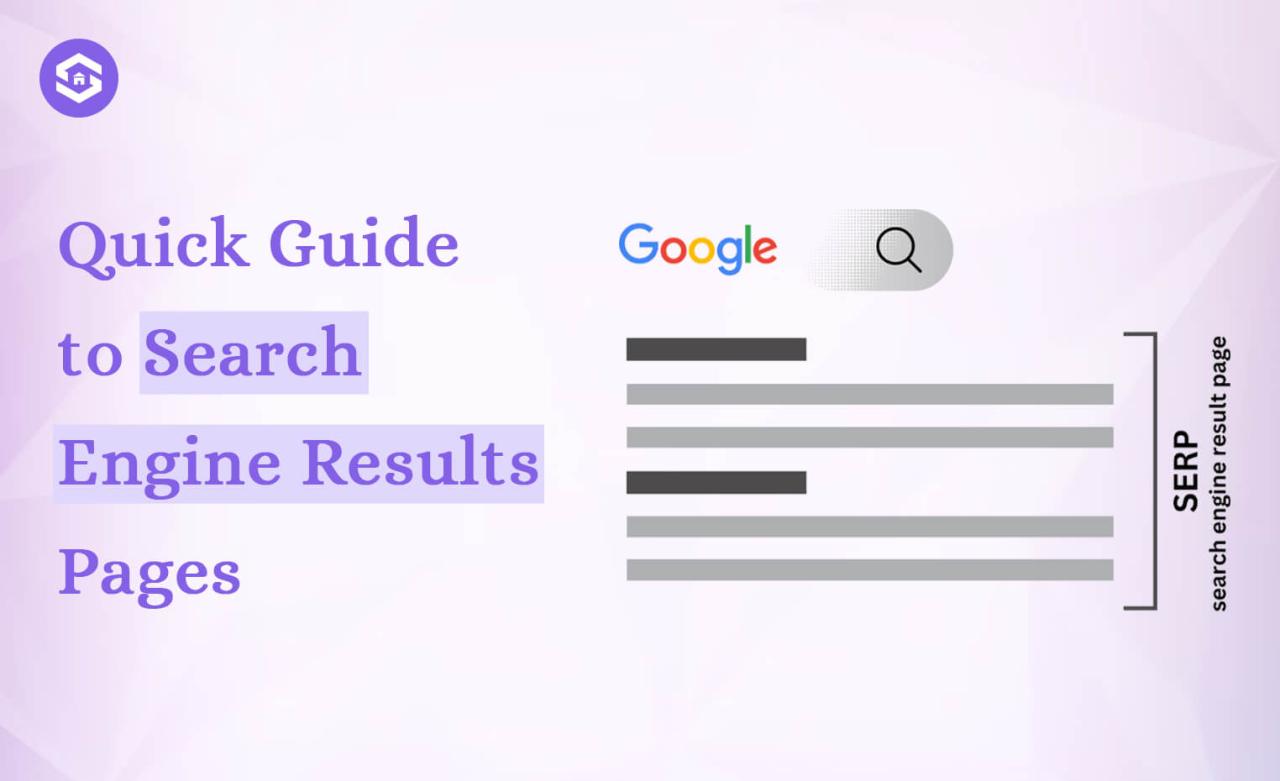
Putting SERP features to work for your business requires more than just understanding them. It necessitates strategic optimization to leverage these prominent spots in search results. Successful campaigns demonstrate how to achieve improved visibility, increased click-through rates, and ultimately, better organic search performance.
Real-World Examples of Optimization Success
Effective SERP feature optimization isn’t theoretical; it’s about tangible results. Here are real-world examples of how businesses have successfully harnessed SERP features to drive traffic and conversions.
- A local bakery, “Sweet Treats,” noticed a significant increase in online orders after optimizing their recipe-focused content for featured snippets. They structured their recipe pages with clear, concise descriptions, high-quality images, and schema markup to ensure Google could easily extract the information. This strategy resulted in a 25% increase in organic traffic and a 15% increase in online order conversions within the first quarter.
- A software company, “Tech Solutions,” saw a marked improvement in their lead generation after optimizing their product pages for rich results. They implemented structured data markup to highlight key features, specifications, and customer reviews, making their product listings more attractive and informative. This led to a 10% increase in qualified leads and a 5% reduction in customer support tickets related to product confusion.
- An e-commerce retailer, “Fashion Finds,” successfully leveraged knowledge panels to enhance brand visibility. They meticulously updated their company profile and ensured accuracy in all relevant information. This resulted in a 15% increase in brand awareness among target customers and a corresponding rise in product inquiries from users directly interacting with the knowledge panel.
Strategies Employed in Successful Campaigns
Understanding the underlying strategies is crucial to replicating success. Here are key elements consistently used in effective SERP feature optimization campaigns.
- Content Optimization: Focusing on high-quality, informative, and well-structured content tailored to the specific SERP feature. This includes employing s, schema markup, and concise language to provide direct answers to user queries, or provide a comprehensive overview that Google can use to create a rich result.
- Technical Optimization: Ensuring website speed, mobile-friendliness, and proper schema markup implementation to meet Google’s technical requirements for displaying rich results. Proper use of schema markup and structured data is essential.
- Research: Identifying the specific s and phrases that trigger the desired SERP features. This requires thorough research into user intent and search queries relevant to the business.
- Monitoring and Analysis: Continuously monitoring the performance of optimized content and making adjustments as needed. This includes tracking key metrics like click-through rate, impressions, and conversions.
Impact Measurement and Lessons Learned
Measuring the impact of SERP feature optimization is critical to assessing success. Here’s how campaign success is measured, along with crucial lessons learned.
- Quantifiable Metrics: Success is measured by quantifiable metrics like increased organic traffic, improved click-through rates, higher conversion rates, and enhanced brand visibility. Tracking these metrics across various platforms (Google Analytics, Search Console) is key to identifying areas for improvement.
- Qualitative Feedback: Qualitative feedback, including customer reviews, feedback forms, and social media interactions, can offer insights into how SERP features impact user experience. This allows for continuous improvement and adaptation to user needs.
- Adaptability: SERP features are dynamic. Campaigns must adapt to algorithm updates and evolving user behavior. This ensures that strategies remain relevant and effective.
Comparative Analysis of Optimization Strategies
A comparative table illustrating the impact of various strategies can highlight the effectiveness of different approaches.
| Optimization Strategy | Increased Organic Traffic (%) | Click-Through Rate (%) | Conversion Rate (%) |
|---|---|---|---|
| Content Optimization | 15-25 | 10-15 | 5-10 |
| Technical Optimization | 10-20 | 8-12 | 3-7 |
| Research | 12-20 | 9-14 | 4-8 |
| Monitoring & Analysis | 10-15 | 7-12 | 3-6 |
Future Trends in SERP Features
The search engine results page (SERP) is constantly evolving, driven by user needs and technological advancements. Predicting the precise future of SERP features is challenging, but by analyzing current trends and emerging technologies, we can anticipate likely developments. These changes will inevitably impact strategies, requiring proactive adaptation to maintain visibility and organic traffic.
Anticipated Developments in SERP Features
SERP features are poised for significant transformations in the coming years. We can anticipate an increase in the personalization of search results, with features tailored to individual user preferences, search history, and location. Furthermore, the integration of AI-powered insights and real-time data will become increasingly prevalent, resulting in more dynamic and up-to-date information displays. This trend will also lead to a more comprehensive and integrated user experience.
Examples of Emerging SERP Features
Several emerging SERP features are already showing promise. One example is the integration of augmented reality (AR) experiences directly into search results, allowing users to visualize products or services in their own environment. Similarly, interactive maps and 360-degree views of locations are gaining traction, providing a richer sensory experience for users. The incorporation of conversational AI, enabling users to ask complex questions and receive detailed answers, is another noteworthy trend.
These examples represent a shift towards more immersive and interactive search experiences.
Impact on Strategies
The evolution of SERP features will necessitate significant adjustments to strategies. Optimizing for these new features will require a deeper understanding of user intent and a focus on providing comprehensive and engaging content that leverages the emerging technologies. This may involve creating more interactive and visually appealing content, such as infographics, videos, and 360-degree views, to stand out in the SERP.
Potential Challenges and Opportunities
The evolution of SERP features presents both challenges and opportunities for SEOs. A major challenge will be keeping up with the rapid pace of innovation and adapting to new ranking factors. However, this rapid evolution also presents opportunities to differentiate content and engage users in novel ways. Successfully navigating this dynamic environment will require a proactive approach, embracing experimentation and a willingness to adapt to the changing landscape.
Potential Future SERP Feature Formats
The following table Artikels potential future SERP feature formats, along with their anticipated impact on strategies.
| Feature Format | Description | Impact on Strategies |
|---|---|---|
| AR Experiences | Augmented reality overlays within search results, allowing users to visualize products in their environment. | Focus on high-quality images, 3D models, and interactive elements for enhanced user engagement. |
| Interactive Maps & 360° Views | Interactive maps with 360-degree views of locations. | Develop high-quality, descriptive content and multimedia to attract users to your location or service. |
| Conversational AI-Powered Answers | Complex questions answered by conversational AI within search results. | Create comprehensive and detailed content that directly addresses user queries and provides insightful answers. |
| Personalized Recommendations | Search results tailored to individual user preferences and search history. | Focus on providing highly relevant content and user experiences to target specific user segments. |
Concluding Remarks
In conclusion, mastering SERP features is no longer a luxury but a necessity for any serious strategy. By understanding the intricacies of different types, their impact across various niches, and optimizing your content accordingly, you can significantly enhance your online presence and achieve greater success. The future of search is clearly evolving, and staying ahead of the curve is paramount.
